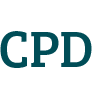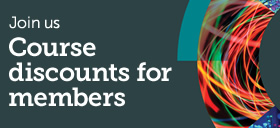Approved training courses
Key Learning Objectives
At the end of this course, you will understand how to:
• Assess the reliability and accuracy of data and information arising from samples taken from a population, using techniques such as:
Basic statistics: mean, standard deviation, etc.
Histograms
Box plots
Confidence intervals
• Monitor and detect adverse trends before a process goes out of control, using:
Control charts: Shewhart, mean and range, cumulative sum control chart (CUSUM) and attribute charts
Linear regression
• Assess the capability and reliability of a process
• Use and know the limitations of acceptance testing using ISO 2859 and ISO 3951
• Compare results using:
T-tests
Analysis of variance (ANOVA)
• Interpret the interaction of process parameters via experimental design and multivariate analysis
• Maintain regulatory compliance
Course Outline
Basic Statistical Quantities
• Terminology and definitions
• Measures and visual plots to describe populations and samples
• Deciding how much data to collect to enable appropriate decision making
Statistical Techniques
• Data visualization tools:
Histograms
Box plots
• Confidence and tolerance intervals
• Statistical process control (SPC) tools:
Shewhart, CUSUM and attribute control charts
Pareto charts
Fishbone diagrams
Process capability (capability potential (Cp) and centered process capability (CpK)
• ISO 2859 specification for sampling procedures and tables, application of sampling by attributes
• ISO 3951 sampling procedures for inspection by variables
• Regression analysis
• Statistical testing:
The t-test
ANOVA
Outlier testing
Non-parametric methods
• Experimental design
• Multivariate analysis
Practical Application of Statistical Techniques
• Practical examples of the application of statistical techniques using teamwork sessions
• Experience of the application of statistical techniques in a quality assurance (QA) system in a manufacturing environment
• The role of computers in the application of statistical techniques
• Six Sigma: Definition and benefits
Who Should Attend
The Aspiring Qualified Person
• Our pharmaceutical mathematics and statistics training is generally considered the best available and our QPs are held in high regard within the industry.
• As well as being accepted in the UK, our training courses are well known and accepted by several EU countries including Ireland, the Netherlands, Austria, Hungary and Malta.
• You are more likely to become a QP with us than with any other training provider.
The Pharmaceutical Technical Professional
• Not all people attending these courses intend to become QPs. Many use the training to develop as technical managers in other areas of pharmaceutical manufacture and control.
• Many industry professionals from a range of disciplines attend the courses as part of their continuing professional development. Taken with some of our other QP modules, this course is designed to lead to postgraduate certificate, diploma and MSc qualifications.
For any queries regarding entry requirements for both QP training and/or postgraduate qualifications please contact QPpharma@nsf.org
Additional infoNSF delivers instructor-led QP courses with blended training methods, in a mix of virtual and in-person courses. Please visit nsf.org/training for current dates. If you cannot see your delivery method of choice, please contact QPpharma@nsf.org
Blended Learning
28 hours
£3160.00 GBP (plus VAT)
Find an approved training course
Use the options below to search through the growing list of chemical sciences training courses that have been approved by the Royal Society of Chemistry.
Courses are approved for CPD purposes only; approval does not imply they will fulfill any regulatory requirements.



